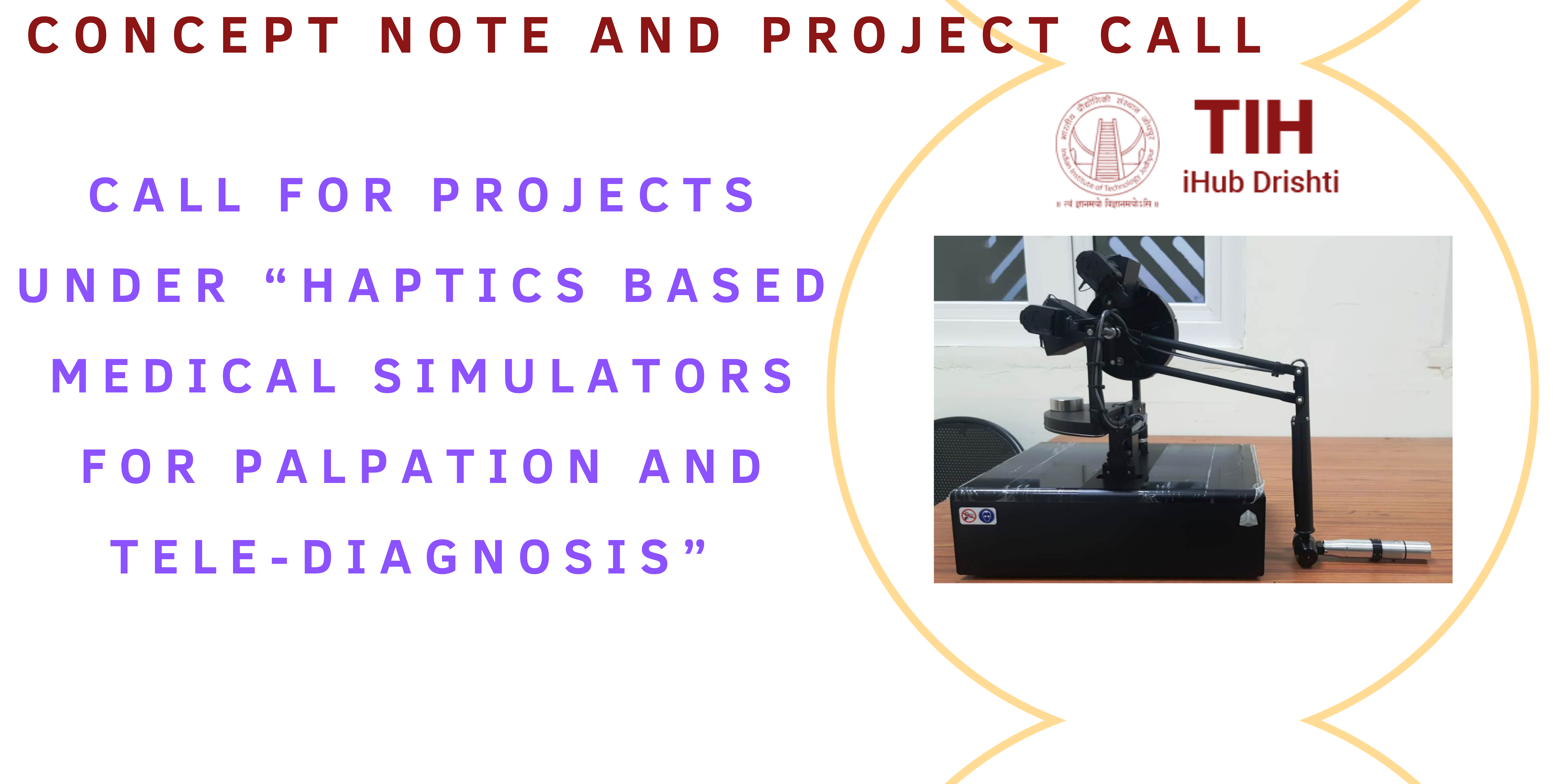
Introduction
In the recent past, we have seen various medical simulators using virtual and augmented reality technologies for training the medical professional. A large number of the medical simulators available in the market do not provide a realistic experience because of unavailability of sense-of-touch information while interacting with the virtual object. These medical simulators just provide audio and video feedback to the training professional. Hence, a realistic hands-on-experience cannot be gained through these simulators. Once haptic information is provided in the form of force, temperature, vibration and pressure, these simulators can be used in a variety of applications in the area of healthcare. One of the prime applications is teaching and training medical professionals at all levels: nursing, MBBS, MS, MD, DNB, DM, MCh, and other super-specialty degrees.
This call for projects is issued to invite interested teams to build medical simulators enabled with haptics.
Scope
Focus of this call is on developing medical simulators for the following domains: neurological training and orthopaedics inspection, particularly for simulation of palpation tasks. The medical simulators must be equipped with the following haptic information: pain, temperature, touch and vibration. Aim of these modalities is to assist clinicians in taking the decisions.
Before rendering the above haptic modalities in the virtual environment, it is needed to model them using real patient data. Accuracy of the developed models is very critical for producing realistic haptic rendering of the virtual environment in the simulator. Hence, realism of the simulator must be validated by the expert doctors.
Realistic medical simulators will require efficient graphical and haptic rendering of the virtual environment. Hence, it is envisioned that multiple teams may collaborate to build realistic medical simulators enabled with haptic information for imparting neurological and orthopaedic training to the medical professionals. A team may work on the entire components of the simulator, a single system or parts of a system. Irrespective of the part of the simulator a team seeks to work on, all parts must integrate into a common model. This implies that all parts should be able to employ a common format and include the ability to scale and co-register with the rest of the platform.
Few suggestive topics, but not limited to:
- Palpation Simulation: Palpation is a critical skill to determine the size, shape, firmness, or location of an abnormality suggestive of disease. Palpating the abdomen helps clinicians sense tenderness and rigidity can help in diagnostics and help in saving lives for critical diseases. Various palpations can be simulated for training: thoracic palpation, abdominal palpation, uterine palpation, breast palpation, hernia palpation. Haptic devices could be used for simulation and training.
- Haptics Gloves for Tele-diagnosis and Palpation: A haptic glove or robot could be used for palpation of a virtual/real patient for training or tele-diagnostics. For a tele-diagnostics application, the haptic glove helps in collecting the following haptic information about a real patient: tactile, vibration, pain and temperature. The same information when sent to a distant doctor in real time will avoid multiple visits of the patient to a specialist doctor and more importantly, it can be used for providing referrals in case of a medical emergency. The haptic glove along with AR/VR technologies can also be used to build simulators for palpation as mentioned above.
Participation Requirement
Participation is invited from entities with technical competence and experience in anatomy, image segmentation, modeling and rendering. Here are specific details:
Who can submit a proposal under the call?
- Proposals can be submitted by principal investigators (PIs) and and co-investigators (co-PIs) belonging to:
- Indian industry (big industry or startups)
- Indian academia
- Indian hospitals
- Faculty of academic institutes
- Scientists from Research Laboratories
- Individual experts who can implement the project in an institution/SIRO Recognized lab etc.
- Startups & MSME's with established credibility
- COP can also be addressed to person/entity of acknowledged success in the problem area (based on past works)
Teams may include investigators from one, two, or all three categories above. Expertise in all parts of the proposed project should be represented in the Team.
- All PI and Co-PI details have to be present in the proposal at the time of submission, and the choice of each partner in the project must be justified by their experience and the work that they propose to undertake in the project.
Project specifics and deliverables
- The proposal must include a detailed work division and plan, including final integration and delivery.
- The proposal must include six-monthly detailed budget estimates for the entire duration of the project.
- Complete representation of the selected parts of the medical simulator system must be covered by the proposal.
- All the software created during the project must be well documented as per community standards, unit tested and maintained using versioning tools like Git.
Project Budget and Duration
- The proposal must contain a detailed description of the budget required for the overall project, and its division by partner and budget head.
- The project will be awarded for two or three years, with regular monitoring as outlined below.
Project Monitoring
- A project advisory and monitoring sub-committee will be formed from the TIH AR/VR vertical core committee. They will review the submitted proposals, and monitor the project once it is awarded.
- The project will be subject to regular review by this committee every six months. The budget of the project will not be released for the subsequent half-year, if the project fails to meet the milestones and deliverables of the current half-year.
Project Submission
Deadline of submission of proposal: 15 January 2022.

